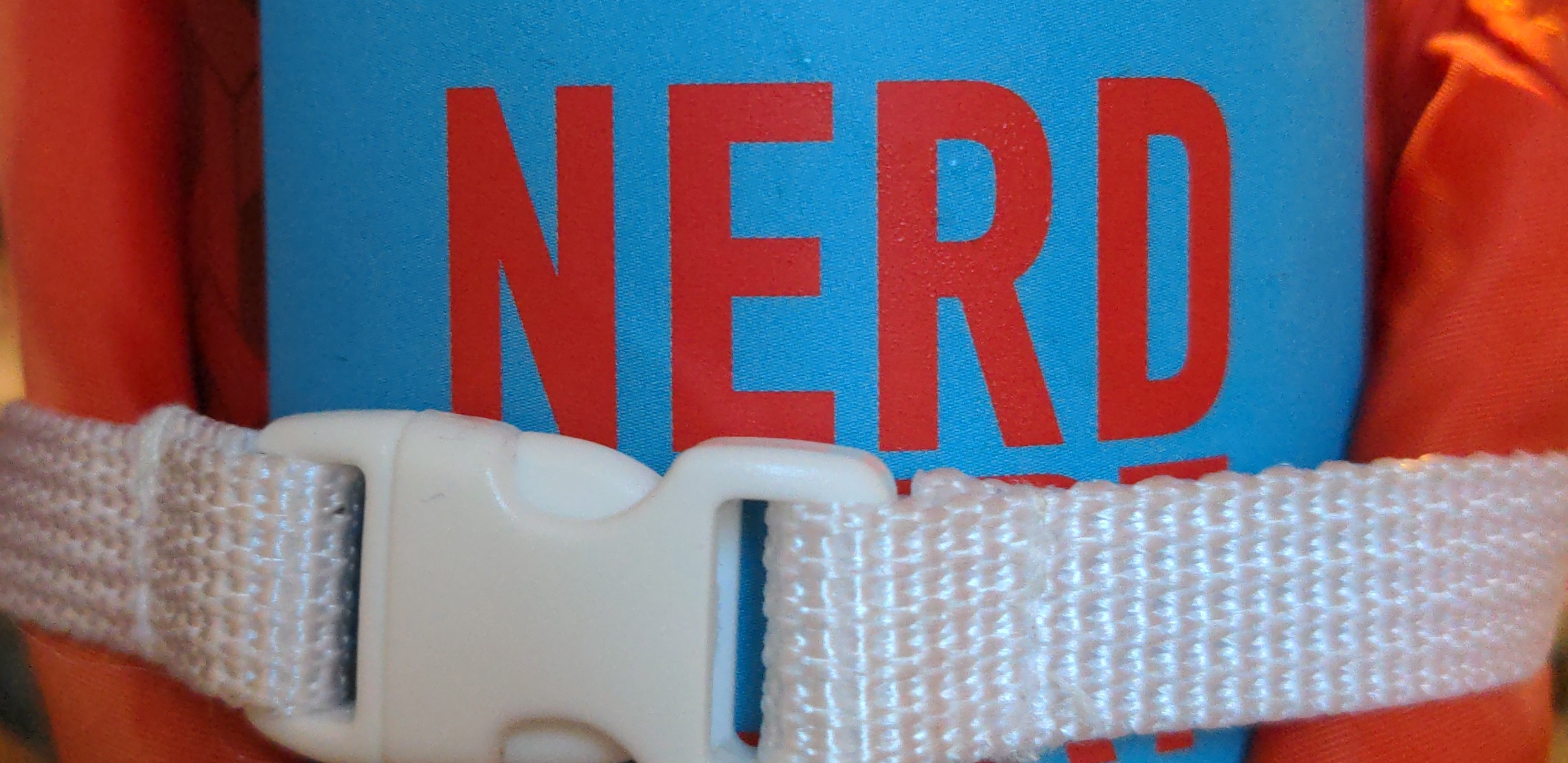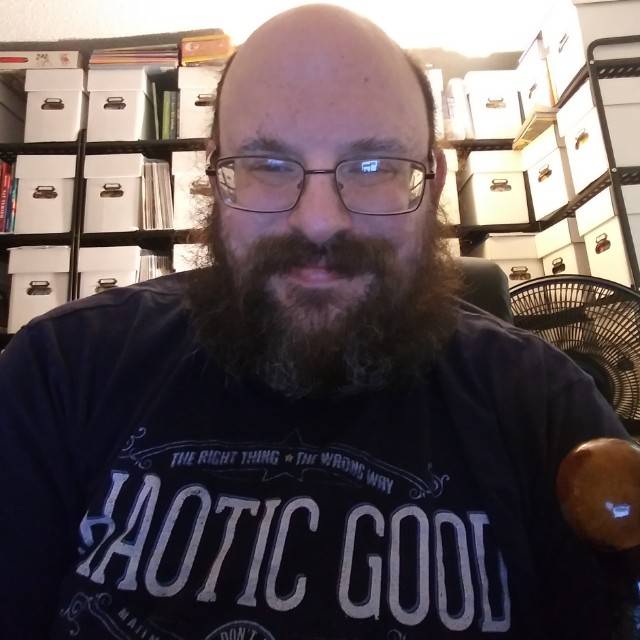Actually 0.99… is the same as 1. They both represent the same number
It’s so dumb and it makes perfect sense at the same time. There is an infinitely small difference between the two numbers so it’s the same number.
There is no difference, not even an infinitesimally small one. 1 and 0.999… represent the exact same number.
They only look different because 1/3 out of 1 can’t be represented well in a decimal counting system.
Right, it’s only a problem because we chose base ten (a rather inconvenient number). If we did math in base twelve, 1/3 in base twelve would simply be 0.4. It doesn’t repeat. Simply, then, 1/3 = 0.4, then (0.4 × 3) = (0.4 + 0.4 + 0.4) = 1 in base twelve. No issues, no limits, just clean simple addition. No more simple than how 0.5 + 0.5 = 1 in base ten.
One problem in base twelve is that 1/5 does repeat, being about 0.2497… repeating. But eh, who needs 5? So what, we have 5 fingers, big whoop, it’s not that great of a number. 6 on the other hand, what an amazing number. I wish we had 6 fingers, that’d be great, and we would have evolved to use base twelve, a much better base!
I mean, there is no perfect base. But the 1/3=0.333… thing is to be understood as a representation of that 1 split three ways
Well, technically “infinitesimally small” means zero sooooooooo
Edit: this is wrong
An infinitesimal is a non-zero number that is closer to zero than any real number. An infinitesimal is what would have to be between 0.999… and 1.
You are correct and I am wrong, I always assumed it to mean the same thing as a limit going to infinity that goes to 0
It’s a weird concept and it’s possible that I’m using it incorrectly, too - but the context at least is correct. :)
Edit: I think I am using it incorrectly, actually, as in reality the difference is infinitesimally small. But the general idea I was trying to get across is that there is no real number between 0.999… and 1. :)
I think you did use it right tho. It is a infinitesimal difference between 0.999 and 1.
“Infinitesimal” means immeasurably or incalculably small, or taking on values arbitrarily close to but greater than zero.
Wait what
I always thought infinitesimal was one of those fake words, like gazillion or something
It sounds like it should be, but it’s actually a real (or, non-real, I suppose, in mathematical terms) thing! :)
No, it’s not “so close so as to basically be the same number”. It is the same number.
They said its the same number though, not basically the same. The idea that as you keep adding 9s to 0.9 you reduce the difference, an infinite amount of 9s yields an infinitely small difference (i.e. no difference) seems sound to me. I think they’re spot on.
No, there is no difference. Infitesimal or otherwise. They are the same number, able to be shown mathematically in a number of ways.
Yes, thats what we’re saying. No one said it’s an infinitesimally small difference as in hyperbolically its there but really small. Like literally, if you start with 0.9 = 1-0.1, 0.99 = 1-0.01, 0.9… n nines …9 = 1-0.1^n. You’ll start to approach one, and the difference with one would be 0.1^n correct? So if you make that difference infinitely small (infinite: to an infinite extent or amount): lim n -> inf of 0.1^n = 0. And therefore 0.999… = lim n -> inf of 1-0.1^n = 1-0 = 1.
I think it’s a good way to rationalize, why 0.999… is THE SAME as 1. The more 9s you add, the smaller the difference, at infinite nines, you’ll have an infinitely small difference which is the same as no difference at all. It’s the literal proof, idk how to make it more clear. I think you’re confusing infinitely and infinitesimally which are not at all the same.
Technically you’re both right as there are no infinitesimals in the real number system, which is also one of the easiest ways to explain why this is true.
That’s what it means, though. For the function y=x, the limit as x approaches 1, y = 1. This is exactly what the comment of 0.99999… = 1 means. The difference is infinitely small. Infinitely small is zero. The difference is zero.
Infinity small is infinity small. Not zero
That’s simply not true, as I demonstrated in my example.
There was also a veritasium video about this.
It was interesting.
His videos always are
If .99…9=1, then 0.999…8=0.999…9, 0.99…7=0.999…8, and so forth to where 0=1?
The tricky part is that there is no 0.999…9 because there is no last digit 9. It just keeps going forever.
If you are interested in the proof of why 0.999999999… = 1:
0.9999999… / 10 = 0.09999999… You can divide the number by 10 by adding a 0 to the first decimal place.
0.9999999… - 0.09999999… = 0.9 because the digit 9 in the second, third, fourth, … decimal places cancel each other out.
Let’s pretend there is a finite way to write 0.9999999…, but we do not know what it is yet. Let’s call it x. According to the above calculations x - x/10 = 0.9 must be true. That means 0.9x = 0.9. dividing both sides by 0.9, the answer is x = 1.
The reason you can’t abuse this to prove 0=1 as you suggested, is because this proof relies on an infinite number of 9 digits cancelling each other out. The number you mentioned is 0.9999…8. That could be a number with lots of lots of decimal places, but there has to be a last digit 8 eventually, so by definition it is not an infinite amount of 9 digits before. A number with infinite digits and then another digit in the end can not exist, because infinity does not end.
Wonderful explanation. It got the point across.
That is the best way to describe this problem I’ve ever heard, this is beautiful
This is the kind of stuff I love to read about. Very cool
Maybe a stupid question, but can you even divide a number with infinite decimals?
I know you can find ratios of other infinitely repeating numbers by dividing them by 9,99,999, etc., divide those, and then write it as a decimal.
For example 0.17171717…/3
(17/99)/3 = 17/(99*3) = 17/297
but with 9 that would just be… one? 9/9=1
That in itself sounds like a basis for a proof but idk
Yes that’s essentially the proof I learned in high school. 9/9=1. I believe there’s multiple ways to go about it.
0.999…8 does not equal 0.999…9 so no
If the “…” means ‘repeats without end’ here, then saying “there’s an 8 after” or “the final 9” is a contradiction as there is no such end to get to.
There are cases where “…” is a finite sequence, such as “1, 2, … 99, 100”. But this is not one of them.
I’m aware, I was trying to use the same notation that he was so it might be easier for him to understand
Your way of thinking makes sense but you’re interpreting it wrong.
If you can round up and say “0,9_ = 1” , then why can’t you round down and repeat until “0 = 1”? The thing is, there’s no rounding up, the 0,0…1 that you’re adding is infinitely small (inexistent).
It looks a lot less unintuitive if you use fractions:
1/3 = 0.3_
0.3_ * 3 = 0.9_
0.9_ = 3/3 = 1
No, because that would imply that infinity has an end. 0.999… = 1 because there are an infinite number of 9s. There isn’t a last 9, and therefore the decimal is equal to 1. Because there are an infinite number of 9s, you can’t put an 8 or 7 at the end, because there is literally no end. The principle of 0.999… = 1 cannot extend to the point point where 0 = 1 because that’s not infinity works.
Huh… Where did you get “0.999… = 0.999…8” from? There’s a huge difference here.
Read carefully. I wrote a finite number(0.999…9)
Think carefully
What does 0.99…8 represent to you exactly
If it’s an infinite amount of 9s then it can’t end in an 8 because there’s an infinite amount of 9s by definition so it’s not a real number
There is no .99…8.
The … implies continuing to infinity, but even if it didn’t, the “8” would be the end, so not an infinitely repeating decimal.
If you really wants to understand the concept , you need to learn about limits
This goes back to an old riddle written by Lewis Carroll of all people (yes, Alice in Wonderland Lewis Carroll.)
A stick I found,
That weighed two pound.
I sawed it up one day.
In pieces eight,
Of equal weight.
How much did each piece weigh?
(Everyone says 1/4 pound, which is wrong.)In Shylock’s bargain for the flesh was found,
No mention of the blood that flowed around.
So when the stick was sawed in eight,
The sawdust lost diminished from the weight.That’s just pretentious. Oh your magic stick was exactly two pounds? The only right answer is “a little bit less than 1/4 pound”? Your stick weighted about 2 pounds, the pieces weigh about 1/4 pound. Get your wonderland shit out of here Lewis.
He had another good one too… imma have to look it up because I don’t have it memorized…
John gave his brother James a box:
About it there were many locks.
James woke and said it gave him pain;
So gave it back to John again.
The box was not with lid supplied
Yet caused two lids to open wide:
And all these locks had never a key
What kind of box, then, could it be?As curly headed Jemmy was sleeping in bed,
His brother John gave him a blow on the head.
James opened his eyelids, and spying his brother,
Doubled his fists, and gave him another.
This kind of a box then is not so rare
The lids are the eyelids, the locks are the hair.
And any schoolboy can tell you to his cost
The key to the tangles is constantly lost.Love the reasoning. Reminds me of how “1 + 1 equals 3 for suffuciently large valies of 1” is actually true when talking about physical objects, since there’s always some rounding involved.
written by Lewis Carroll of all people
I mean, he was a mathematician and a poet. Is it really that surprising he wrote a poem about math?
i’ve seen a few people leave more algebraic/technical explanations so i thought i would try to give a more handwavy explanation. there are three things we need:
- the sum of two numbers doesn’t depend on how those numbers are written. (for example, 1/2 + 1/2 = 0.5 + 0.5.)
- 1/3 = 0.33…
- 1/3 + 1/3 + 1/3 = 1.
combining these three things, we get 0.99… = 0.33… + 0.33… + 0.33… = 1/3 + 1/3 + 1/3 = 1.
it’s worth mentioning the above argument could be refined into an actual proof, but it would require messing around with a formal construction of the real numbers. so it does actually explain “why” 0.99… = 1.
One of the pieces is actually 0.33333…4
If you cut perfectly, which is impossible because you won’t count or split atoms (and there is a smallest possible indivisible size). Each slice is a repeating decimal 0.333… or in other words infinitely many 3s. (i don’t know math well that’s just what i remember from somewhere)
If the number of atoms is a multiple of 3, then you can split it perfectly.
For example say there’s 6 atoms in a cake, and there’s 3 people that want cake. Each person gets 2 atoms which is one third of the cake.
The main problem is simply that math is “perfect” and reality isn’t. Since math is an abstract description of causality while reality doesn’t/can’t really “do” infinity.
But if you really wanted to, you could bake a cake in a lab with a predetermined number of atoms and then split that cake into 3 perfect slices. However, once you start counting multiples(like atoms in a cake) you would no longer get 1/3 or 0.3 because you are now dividing a number bigger than 1(the number of atoms) so you would’t get a fraction(0.3) You would get a whole number.
But if the cake has 7 atoms, better get cover on a nuclear bunker just to be safe.
Technically no
0.3333… repeats infinitely. The 0.333…4 is not an infinitely repeating number. And since 0.333… is, there’s no room to add that 4 anywhere
Which is why adding them up you get 0.999… which is exactly and completely equal to 1
“just ask me the question” is great all by itself.
If you take into account quantum fluctuations each piece will have a uniquely different mass at any given moment of time.











